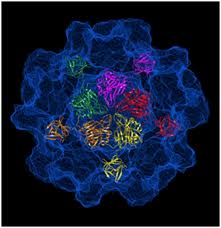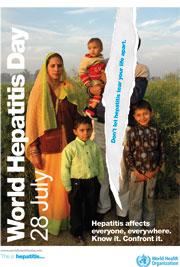 Action Alert! The Hepatitis Community Responds to Health Care Reform. Tell Congress Not To Cut The Prevention and Public Health Fund
Action Alert! The Hepatitis Community Responds to Health Care Reform. Tell Congress Not To Cut The Prevention and Public Health Fund
The Prevention and Public Health Fund is under attack in Congress once again. Some leaders in the House of Representatives would like to make drastic cuts to the Fund as part of negotiations on a long-term deal on the payroll tax cut and Medicare payments rates to medical providers.
The Prevention and Public Health Fund, part of the Affordable Care Act, provides money each year for vital prevention and public health services. The fund will grow each year until it eventually provides $2 billion/year.
This fund is extremely important to the nation’s fight against the viral hepatitis epidemic. Later this year, the Department of Health and Human Services is expected to allocate $10 million from the Fund for viral hepatitis screening, testing, and education programs. This initiative will greatly help efforts to identify the millions of Americans who have chronic hepatitis B or C and link them to care and treatment.
Please take a few minutes to call Congress in support of this lifesaving program!
What YOU can DO:
Please call your U.S. House Representative and two U.S. Senators immediately. We are hearing directly from Congressional staff that phone calls are the most effective form of communication.
Call the Capitol Switchboard toll-free at 1-888-876-6242 and ask to be connected to your United States Representative. When you reach your Representative’s office, tell whoever answers the phone that you are a constituent and that you would like to speak to the staff person who handles health care issues. Whether you speak to the staff person live or leave a voicemail, tell him/her:
“My name is _______________ and I live in (city/state). I am calling in strong support of the Prevention and Public Health Fund, which is an important part of the Affordable Care Act. This Fund is a great opportunity to provide badly needed funding for viral hepatitis prevention, testing, and screening programs and must be preserved. I urge Representative_____________ to oppose any efforts to cut the Fund as part of the payroll tax/Medicare physician reimbursement negotiations.”
After you speak to your Representative’s office, call the Capitol Switchboard again and deliver the same message to the health care staff person in your two U.S. Senators’ office.
Thank you for taking the time to make a difference! Please spread the word.
Get involved with Hepatitis Health Action!
- Sign up for the Hepatitis Health Action email list by visiting http://groups.google.com/group/HepHealth or, email rclary@projectinform.org and we will make sure you are added.
- Join Hepatitis Health Action’s Facebook group: http://tinyurl.com/hephealthfacebook where you can participate in discussions with other advocates and share your ideas and strategies.
Hepatitis Health Action is a campaign led by viral hepatitis advocates working to make sure that health care reform addresses hepatitis B and C.










